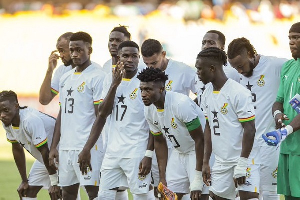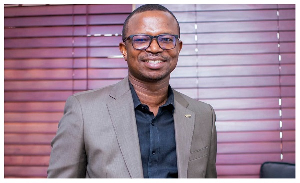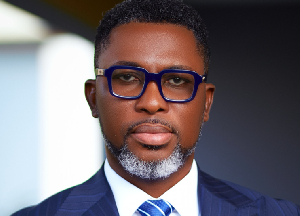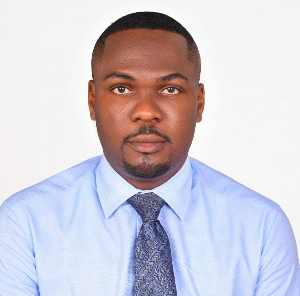The President’s $100 million package to contain and manage the COVID-19 pandemic, and the subsequent response by the Finance Minister in Parliament have raised a number of questions.
Whiles the opposition and a section of Ghanaians assert and going by the statement of the Finance Minister, government has to borrow the money from the IMF/World Bank and other multi and bilateral partners, the ruling party operatives and the other section of Ghanaians assert the money is here (in MB’s voice). Now let’s separate the facts from the myths.
First of all, the FACT is, Ghana DOES NOT have the money laying around to be used. The misconception perhaps stems from the lack of understanding of how Central Government’s fiscal operations works.
Before the beginning of each year, government brings its operational budget to parliament for approval in accordance with the constitution and the relevant laws. The budget as put in a statement basically indicates and explains how much government plans to spend (expenditure) in the proceeding year, what and where it intends to spend on and where it will be getting the money (revenue) it intends to spend.
Naturally, and just as any rational individual, either you have the money saved and tucked somewhere in which case you just go for it and spend, or you borrow to spend. Same applies to government of Ghana. However, the government of Ghana’s reality is based on generating revenue during the fiscal year in question and then proceeds to spend what it makes. Unfortunately, because government in reality does not make enough money to spend on its increasing expenditures, it has to resort to borrowing to cover up for the difference in what it makes in revenue and the totality of what it intends spending.
Now, where does government of Ghana gets its Revenue from? These include taxes, levies, receipts from the sales of its natural resources and royalties there are, equities, grants from donor partners, etc.
It is important to understand these revenues do not all come in at the beginning of the fiscal year as a bulk money before the government proceeds to spend. They come as and when they are due. Same applies to loans/bonds raised. With this basic understanding, let us look at the specific numbers for 2020.
For the 2020 fiscal year, total expenditure/appropriation is projected at Ghc98 billion. Total revenue is projected at Ghc67 billion. A cursory analysis suggests government needs an extra Ghc31 billion which it does not have, and knows it cannot generate from its resources nor taxes except from borrowing. That is virtually half of total revenue and grants.
Revenue projections come with certain expectations and under the assumption of all things being held equal, or with a moderate case scenario of the expected amount to be realised. For instance, crude prices performing at $58 at least, gold at $1,400, import duties and levies at a certain number, etc etc.
Unfortunately, information available show the first quarter has been rather unpredictable with revenue generation. This unexpected turn of events means the deficit gap will keep widening if expenditure is held constant; Ghana’s current reality.
The simple reason for this assertion is the composition of Ghana’s expenditure; what can be shelved for now and what cannot be shelved. For instance, Compensation of Employees cannot be shelved. Goods and services largely cannot be shelved unless MDAs operations come to a halt. Interest payments must be done. Contingency Funds cannot be shelved. Arrears must be cleared, so is amortisation etc etc. Unfortunately, all these make up about 74% of total expenditure. This translates to Ghc72.5 billion.
What this means, breaking expenditure down to monthly and quarterly spending is, should all other expenditures be shelved, at least this 74% must still be made regardless. This is to avoid chaos. This basically translates into an average of Ghc6 billion a month and Ghc18 billion per quarter.
Taking a look at revenue in the same light. Assuming expected shortfall is just 15%. That will leave total projected revenue by year end at around Ghc57 billion. This translates to average monthly of revenue of Ghc4.75 billion and Ghc14.25 billion quarterly. Comparing both items still leaves a lot of deficit should all accrued revenue and grants be dedicated to just those essential budget expenditure lines. All these point to just one conclusion and reality; there is no money.
Now the argument is made of Ghana’s International Reserves as an indication of availability of money. Well, that is misleading in the sense that, these reserves are what we already know as being part of government’s total revenue receipts. These include petroleum receipts and stabilisation funds, government of Ghana bonds and equities, treasury bills, gold, etc denominated in dollars. Most of these are not cash that are readily available. The argument cannot be made of availability of money based on such.
Importantly, the Finance Minister knows this pretty well and knows going to the IMF and the World Bank is the safest and surest bet at the moment because of the Emergency Funding made available by the Bretton Woods Institution. He knows the fall in crude prices will definitely affect the projected $175 million to the Stabilisation Fund. Assuming the projected $30 million to the Contingency Fund has been paid into the accounts, that is still not up to the $100 million proposed and needed.
We can safely conclude as it may not be an uphill task for the government of Ghana to raise the stated amount considering the IMF has activated their emergency $1 trillion fund to the Least Income Countries and Developing Economies, uncertainties among the citizenry as to the source of funding may and is likely to generate a panic situation among the citizenry. What this means is that Ghanaians find ourselves in a precarious situation with the effective management of the COVID-19 pandemic.
Opinions of Thursday, 19 March 2020
Columnist: Albert Wotorgbui
Ghana’s coronavirus emergency funding; A myth or reality?
Akufo-Addo's 2nd address on Coronavirus
0 seconds of 7 minutes, 19 secondsVolume 90%
Press shift question mark to access a list of keyboard shortcuts
Keyboard Shortcuts
Shortcuts Open/Close/ or ?
Play/PauseSPACE
Increase Volume↑
Decrease Volume↓
Seek Forward→
Seek Backward←
Captions On/Offc
Fullscreen/Exit Fullscreenf
Mute/Unmutem
Decrease Caption Size-
Increase Caption Size+ or =
Seek %0-9





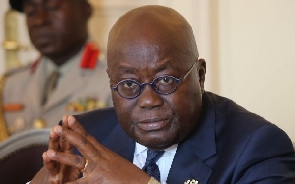

![Former President Akufo-Addo [L] and Okatakyie Afrifa Mensah Former President Akufo-Addo [L] and Okatakyie Afrifa Mensah](https://cdn.ghanaweb.com/imagelib/pics/587/58758132.295.jpg)

